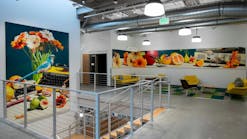Geographically, Taiwanese and Chinese suppliers gained market share at the expense of the other regions. China’s improvement in product quality, coupled with gains in the domestic market, fueled the growth from 2% market share to 6% in one year. Korean companies lost share in the slowing market, even though they were the most aggressive in increasing capacity during the ramp-up in 2010. Philips Lumileds, Cree, and Osram Optoelectronics’ expansion into 6-inch substrates slowed as there was a great deal of excess capacity in their existing 4-inch lines. The Japanese LED business has trended down or flat. However, Nichia and TG are major beneficiaries of the boom in tablet computers. Osram Optoelectronics gained a major design win, which propelled its visible LED component business to more than $1 billion. Mobile. This segment stayed flat, at $3.4 billion. The overall decrease in the mobile phones market was offset by a sharp rise in tablet display and flash applications. A major development in this segment is the move to OLED displays. Approximately 50% of smartphone displays are expected to be OLEDs by 2016. TV/Monitor Backlight. The LED revenue for TV and monitor backlights was $3 billion in 2011, but it is projected to drop substantially by 2016. The key disruptive factor in this segment is the introduction of low-cost direct backlit technology, targeted at sub-42-inch LCD TVs. This new technology can result in significant savings in the BOM, reducing the gap between LED and CCFL backlit TVs. These TVs are known as “Chubby TVs” since they are thicker than the slim edge-lit design the industry has been touting for the past few years. Lighting. The same supply conditions that reduced the price of LEDs increased the demand for packaged LED in lighting applications from $1.2 billion in 2010 to $1.8 billion in 2011. System efficacy, rather than LED efficacy, was the gating factor in 2011. The LED luminaire and replacement lamp market was $9.3 billion in 2011, an increase of 45% over 2010. The market for LEDs in lighting is expected to demonstate substantial unit growth over the next five years, but revenue growth will be much lower due to pricing pressure. Automotive: Revenue reached $1 billion in 2011 We expect a 5-year CAGR of 34% for LED headlamps. In addition to the styling issues, this is part of the trend to convert all front lighting to LEDs, as it will provide more front-end room for the car designer and reduce the overall system cost. Revenue for interior automotive lighting will show a modest decline over the next five years as instrument panel adoption reaches saturation and the market declines with prices. The revenues for the LED packaging industry are expected to be flat in the next five years. With excess capacity in the industry there is a threat of unsustainable prices. Consolidation, vertical, and horizontal can help improve margins. To further improve the profit margin, product strategies such as LED packages tested for high temperature, narrow binning, high CRI, directional /multidirectional LEDs, and embedded controls are being tried by the market. The annual Strategies in Light Conference will be addressing both the market and the product issues on February 7-9, 2012 in Santa Clara, California. For more information, contact Strategies Unlimited at +1 650 941-3438 (voice) or e-mail at
info@strategies u.com, or check the company's web site at
www.strategies-u.com.





